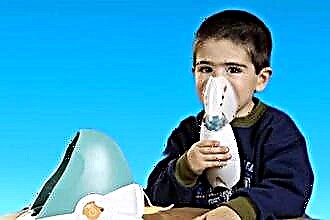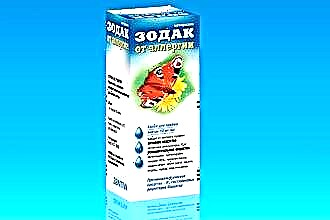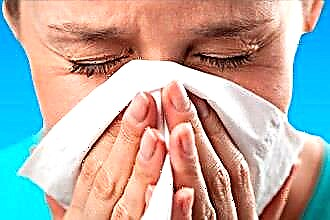Causes and signs
 Laryngotracheitis is often caused by a viral infection (parainfluenza, influenza, herpes). Among the main reasons contributing to the onset and development of the disease are:
Laryngotracheitis is often caused by a viral infection (parainfluenza, influenza, herpes). Among the main reasons contributing to the onset and development of the disease are:
- features of the anatomical and physiological structure of the nasopharynx organs at the age of up to five years (narrow larynx);
- colds; weakened immunity;
- hypothermia, often a small draft is enough;
- contact with a carrier of the infection;
- loud and prolonged cry, overstrain of the vocal cords, mechanical damage to the larynx;
- inhalation of various substances that cause allergies (varnish, paint, wool, dust);
- high temperature (above 22 degrees), low humidity (less than 50%) and dusty air in the room where the patient is.
The likelihood of laryngotracheitis increases in the presence of chronic diseases of the nasopharynx, frequent nasal congestion, diseases of the teeth and gums.
Also, at the age of five years, the disease is often accompanied by signs of false croup, which is dangerous with severe swelling of the pharynx and can cause suffocation. Therefore, in order to prevent a threat to the child's life, one should know what symptoms appear with laryngotracheitis, and what treatment is required at different stages of the development of the disease.
There are several forms of the disease, each of which is characterized by certain symptoms and requires an individual approach:
- Catarrhal form - the safest type of laryngotracheitis. It is this form that is most often found at the age of fourteen years. The main symptoms of laryngotracheitis in this case are similar to those of most viral infections: sore throat, hoarseness, dry annoying cough, hyperthermia. However, with incorrect or untimely treatment, there is a high likelihood of developing stenosis, which is life-threatening.
- Hyperplastic form - a type of laryngotracheitis, which also develops quite often in children. The main difference between this form is severe swelling of the pharyngeal mucosa, which can cause difficulty breathing.
- Hemorrhagic form accompanied by hemorrhage in the laryngeal mucosa and often occurs due to the presence of certain provoking factors (disturbances in the process of hematopoiesis, liver disease). The main signs in this case: dryness in the mouth, attacks of suffocating cough, viscous secretion mixed with blood, sensation of a foreign object in the throat.
Laryngotracheitis is diagnosed in 30% of children under the age of three who first met a common respiratory viral infection. The risk of developing the disease is higher in those with allergies.
The main symptoms and signs of laryngotracheitis, which appear at any stage of the development of the disease:
- runny nose, hyperthermia, general weakness are the main signs of an acute respiratory illness;
- change in tone of voice, hoarseness;
- sore throat when swallowing;
- decreased appetite;
- dry, paroxysmal, barking cough;
- rapid or, on the contrary, shortness of breath; dyspnea;
- in the later stages of the disease, against the background of shortness of breath, pallor of the skin, cyanosis of the nasolabial triangle may appear.
Important! If an infant is ill with laryngotracheitis, then the following signs will help diagnose the disease: lethargy, increased anxiety, moodiness, runny nose, loud, barking cough.
Treatment
It is necessary to treat laryngotracheitis in children in a comprehensive manner, carrying out procedures aimed at combating the cause of the disease, as well as eliminating and alleviating the main symptoms.
General recommendations for the treatment of the disease include a number of important measures.
 With laryngotracheitis, bed rest is required, the exclusion of the likelihood of hypothermia and overstrain of the vocal cords.
With laryngotracheitis, bed rest is required, the exclusion of the likelihood of hypothermia and overstrain of the vocal cords.- You should also observe the optimal climatic conditions in the room where the child is: sufficient humidity (at least 50%, preferably 60-70%), cool air (no more than 20 degrees). The necessary parameters can be achieved through wet cleaning, operation of a humidifier, and ventilation of the room.
- Drinking plenty of water helps to moisturize the nasopharyngeal mucosa, reduce intoxication of the body, and dilute the viscous secretion that often accompanies laryngotracheitis. In this case, the use of compotes, herbal teas, alkaline drinks (Borjomi) is shown. The main thing is that the liquid used is warm (about 37 degrees). Hot, too cold and carbonated drinks are contraindicated.
- Nutrition during the period of illness should be as balanced as possible, with a sufficient amount of vitamins (vegetables, fruits, meat, fish, cereals). In this case, spicy food should be excluded, giving preference to mushy warm food.
When treating laryngotracheitis in patients prone to allergies, it is necessary to limit the use of essential oils, carefully use herbal infusions, and use only proven medicines.
Along with the general recommendations for laryngotracheitis, it is necessary to apply drug treatment.
- The use of antiallergic drugs. The action of this class of drugs is aimed at reducing edema, preventing the development of stenosis. Most of the antihistamines are also sedative, which can help calm the baby and reduce muscle spasms. The choice and form of the drug depend on the age of the child. For example, you can use Fenistil, Zodak, Loratadin.
- Antitussives for laryngotracheitis are used only when the disease is accompanied by a dry cough without sputum production. In order for the child to sleep peacefully at night and not wake up from attacks of a suffocating cough, Stoptusin, Herbion with plantain are used.
- Mucolytic and expectorant drugs for productive cough to thin and improve the excretion of phlegm. In this case, breast fees, medicines based on ambroxol (Ambroxol, Lazolvan), acetyl cesteine (ACC) are recommended.
- The use of lozenges for laryngotracheitis, lozenges based on medicinal herbs, antiseptic and analgesic sprays will help reduce sore throat, moisturize the pharyngeal mucosa, and eliminate perspiration.
Important! In children, medications in the form of sprays should be used with caution to avoid the development of bronchospasm.
- If the disease is accompanied by a significant increase in temperature (above 38 degrees), antipyretic drugs in the form of suppositories or syrups based on paracetamol (Cefekon suppositories, Efferalgan syrup) or ibuprofen (Nurofen syrup, Ibufen) should be used.
- If laryngotracheitis is caused by a viral infection, then antiviral drugs are used, for example, Groprinosin, Amizon, drugs based on interferon (Laferobion).
- Antibiotics for laryngotracheitis in children are used in the following situations: when the disease is caused by a bacterial infection; with high intoxication of the body; to prevent complications of the viral nature of the disease. Given the fact that viruses are most often the cause of laryngotracheitis, the use of antibacterial drugs is usually not necessary. If there is a need to use antibiotics, then penicillin drugs (Augmentin) are preferred. Also used are cephalosporins (Cefadox) and, in especially severe cases, macrolides (Sumamed).
Physiotherapy treatment
Simultaneously with the general recommendations for the treatment and use of standard medications, physiotherapeutic procedures are used in the complex therapy of laryngotracheitis to accelerate the healing process and alleviate the symptoms of the disease:
- warm compresses on the pharynx and trachea (hot water bottle), mustard plasters;
- inhalation over steam and using a nebulizer;
- electrophoresis, UHF, microwave therapy;
- massage;
- hot baths for the lower and upper extremities.
Important! Foot baths and warming compresses should only be used at normal body temperature.
If steam inhalation is used in the treatment of laryngotracheitis, then the basic recommendations must be followed:
 carry out the procedure twice or more times a day;
carry out the procedure twice or more times a day;- after the procedure, do not talk or eat or drink for 30 minutes;
- during the procedure, inhale through the mouth, exhaling through the nose;
- inhalations can be carried out over a container with clean hot water or, in the absence of individual intolerance, add a few drops of essential oil (tea tree, eucalyptus);
- procedures with the use of soda-salt solutions are shown (three tablespoons of salt and three teaspoons of baking soda are dissolved in a liter of water).
For the convenience and safety of the inhalation procedure, as well as more efficient delivery of drugs to the area of inflammation, it is better to use a special device - a nebulizer. However, it should be remembered that herbal decoctions and essential oils cannot be used in most nebulizers. In nebulizers, alkaline inhalations with mineral water are used (Borjomi, Polyana Kvasova), drugs shown to eliminate the symptoms of the disease in inhalation form (Lazolvan, Sinupret, Nebutamol).
Gargling with infusions and decoctions of various herbs, for the preparation of which chamomile and calendula flowers, sage are most often used. This procedure allows you to reduce inflammation, reduce pain. Rinsing is carried out three times a day until the symptoms of the disease disappear completely.
Most often, the treatment of laryngotracheitis in children is carried out on an outpatient basis. However, you should be aware of situations when you need to seek urgent medical help. Most often, the danger is caused by conditions complicated by severe laryngeal edema. In this case, the disease is accompanied by:
- intermittent, uneven breathing;
- shortness of breath;
- shortness of breath, noisy breathing;
- excessive excitability or, conversely, drowsiness;
- pallor and cyanosis of the skin.
In this case, there is a stenosing form of laryngotracheitis (false croup), which is dangerous by the development of asphyxia. First aid for false croup:
- alkaline inhalation;
- hot baths for the upper and lower extremities;
- humidification of the air with a humidifier, frequent wet cleaning.

 With laryngotracheitis, bed rest is required, the exclusion of the likelihood of hypothermia and overstrain of the vocal cords.
With laryngotracheitis, bed rest is required, the exclusion of the likelihood of hypothermia and overstrain of the vocal cords. carry out the procedure twice or more times a day;
carry out the procedure twice or more times a day;

